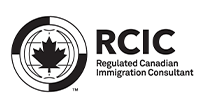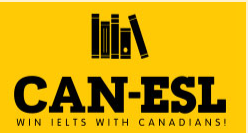Immigration, Refugees and Citizenship Canada (IRCC) has conducted another major Express Entry draw targeting candidates in healthcare and social services occupations. The draw issued 3,500 Invitations to Apply (ITAs) for permanent residency, marking one of the most significant healthcare-focused draws of the year. What makes this round even more noteworthy is that it featured a CRS cut-off score of 462, the lowest for this category in 2025.
This continues Canada’s strong immigration push to address labor shortages in essential sectors such as nursing, personal support work, healthcare management, and specialized clinical roles. Healthcare professionals remain one of IRCC’s top priority groups, and this trend is shaping the overall Express Entry landscape for 2025.
A Closer Look at the Latest Healthcare Draw
To qualify in this draw, candidates needed to meet two key requirements:
- A minimum CRS score of 462
- An Express Entry profile created before December 2, 2024, at 10:19 p.m. UTC
With 3,500 candidates invited, this is one of the largest healthcare draws conducted this year. More importantly, the CRS cut-off dropping to 462 indicates a more accessible pathway for healthcare workers who may not have extremely high CRS scores but have valuable work experience in Canada’s priority sectors.
Healthcare Receives the Third-Highest Number of ITAs in 2025
This draw brings the total number of ITAs issued to healthcare and social services candidates in 2025 to 13,292, making it the third-highest category after:
- French-language candidates – 36,000 ITAs
- Canadian Experience Class (CEC) – 23,850 ITAs
The consistent focus on healthcare is a direct reflection of Canada’s ongoing challenges in the medical sector. Provinces across the country continue to struggle with shortages of nurses, doctors, support workers, and clinical professionals. As a result, IRCC has kept healthcare as a core priority in its category-based selection strategy.
Overview of All Express Entry Draws in 2025
So far in 2025, IRCC has issued 85,723 ITAs across various program categories. The top categories by number of draws include:
- Provincial Nominee Program (PNP): 21 draws
- Canadian Experience Class (CEC): 12 draws
- French-language proficiency: 7 draws
- Healthcare and social services: 6 draws
- Education: 2 draws
- Trade: 1 draw
The high volume of PNP and CEC draws shows Canada’s focus on retaining international graduates, temporary workers, and provincial nominees who are already contributing to local economies.
Why Healthcare Draws Are So Important in 2025
Healthcare draws have consistently issued large numbers of ITAs throughout the year. The sectors targeted include:
- Registered Nurses (RNs)
- Licensed Practical Nurses (LPNs)
- Personal Support Workers (PSWs)
- Physicians and specialists
- Social workers and counselors
- Medical technicians and lab workers
Canada is facing long-standing and widespread healthcare shortages. These shortages grew during the COVID-19 pandemic and continue to place pressure on hospitals, long-term care homes, and community health centers. In many regions, wait times have increased, and staff shortages have reached critical levels.
To address this, IRCC has prioritized healthcare workers by lowering CRS thresholds and conducting frequent category-specific draws.
How This Draw Benefits Healthcare Candidates
The CRS score of 462 is significantly lower than recent general or CEC draws, where CRS thresholds have ranged between 518 and 542. This gives healthcare candidates a competitive advantage, especially those who:
- Have Canadian work experience but slightly lower CRS
- Are recent graduates in healthcare fields
- Have strong work experience but not high language scores
- Have provincial support or job offers
This is also beneficial for candidates currently in Canada on work permits, such as PGWP holders who gained healthcare experience during their studies or after graduation.
Overall Trends in 2025 Express Entry Patterns
Here are some key insights from this year’s draw patterns:
- French-language candidates continue to dominate, with 36,000 ITAs issued.
- CEC draws remain strong, helping international graduates and workers transition to PR.
- Healthcare has solidified itself as a top immigration category with consistent draws and lower CRS requirements.
- PNP draws remain a major priority, showing Canada’s reliance on provincial programs to fill local labor gaps.
IRCC’s category-based selection is clearly designed to support Canadian employers, boost essential services, and help provinces manage workforce shortages.
What This Means for Future Healthcare Candidates
If the trend continues, healthcare workers may expect:
- More frequent draws
- Lower CRS scores
- Greater chances of receiving an ITA
- Continued priority under IRCC’s 2025 immigration strategy
Candidates who improve their CRS scores – especially through language tests, Canadian experience, or provincial nominations – will be well-positioned for upcoming rounds.
Immigration, Refugees and Citizenship Canada (IRCC) has conducted another major Express Entry draw targeting candidates in healthcare and social services occupations. The draw issued 3,500 Invitations to Apply (ITAs) for permanent residency, marking one of the most significant healthcare-focused draws of the year. What makes this round even more noteworthy is that it featured a CRS cut-off score of 462, the lowest for this category in 2025.
This continues Canada’s strong immigration push to address labor shortages in essential sectors such as nursing, personal support work, healthcare management, and specialized clinical roles. Healthcare professionals remain one of IRCC’s top priority groups, and this trend is shaping the overall Express Entry landscape for 2025.
A Closer Look at the Latest Healthcare Draw
To qualify in this draw, candidates needed to meet two key requirements:
- A minimum CRS score of 462
- An Express Entry profile created before December 2, 2024, at 10:19 p.m. UTC
With 3,500 candidates invited, this is one of the largest healthcare draws conducted this year. More importantly, the CRS cut-off dropping to 462 indicates a more accessible pathway for healthcare workers who may not have extremely high CRS scores but have valuable work experience in Canada’s priority sectors.
Healthcare Receives the Third-Highest Number of ITAs in 2025
This draw brings the total number of ITAs issued to healthcare and social services candidates in 2025 to 13,292, making it the third-highest category after:
- French-language candidates – 36,000 ITAs
- Canadian Experience Class (CEC) – 23,850 ITAs
The consistent focus on healthcare is a direct reflection of Canada’s ongoing challenges in the medical sector. Provinces across the country continue to struggle with shortages of nurses, doctors, support workers, and clinical professionals. As a result, IRCC has kept healthcare as a core priority in its category-based selection strategy.
Overview of All Express Entry Draws in 2025
So far in 2025, IRCC has issued 85,723 ITAs across various program categories. The top categories by number of draws include:
- Provincial Nominee Program (PNP): 21 draws
- Canadian Experience Class (CEC): 12 draws
- French-language proficiency: 7 draws
- Healthcare and social services: 6 draws
- Education: 2 draws
- Trade: 1 draw
The high volume of PNP and CEC draws shows Canada’s focus on retaining international graduates, temporary workers, and provincial nominees who are already contributing to local economies.
Why Healthcare Draws Are So Important in 2025
Healthcare draws have consistently issued large numbers of ITAs throughout the year. The sectors targeted include:
- Registered Nurses (RNs)
- Licensed Practical Nurses (LPNs)
- Personal Support Workers (PSWs)
- Physicians and specialists
- Social workers and counselors
- Medical technicians and lab workers
Canada is facing long-standing and widespread healthcare shortages. These shortages grew during the COVID-19 pandemic and continue to place pressure on hospitals, long-term care homes, and community health centers. In many regions, wait times have increased, and staff shortages have reached critical levels.
To address this, IRCC has prioritized healthcare workers by lowering CRS thresholds and conducting frequent category-specific draws.
How This Draw Benefits Healthcare Candidates
The CRS score of 462 is significantly lower than recent general or CEC draws, where CRS thresholds have ranged between 518 and 542. This gives healthcare candidates a competitive advantage, especially those who:
- Have Canadian work experience but slightly lower CRS
- Are recent graduates in healthcare fields
- Have strong work experience but not high language scores
- Have provincial support or job offers
This is also beneficial for candidates currently in Canada on work permits, such as PGWP holders who gained healthcare experience during their studies or after graduation.
Overall Trends in 2025 Express Entry Patterns
Here are some key insights from this year’s draw patterns:
- French-language candidates continue to dominate, with 36,000 ITAs issued.
- CEC draws remain strong, helping international graduates and workers transition to PR.
- Healthcare has solidified itself as a top immigration category with consistent draws and lower CRS requirements.
- PNP draws remain a major priority, showing Canada’s reliance on provincial programs to fill local labor gaps.
IRCC’s category-based selection is clearly designed to support Canadian employers, boost essential services, and help provinces manage workforce shortages.
What This Means for Future Healthcare Candidates
If the trend continues, healthcare workers may expect:
- More frequent draws
- Lower CRS scores
- Greater chances of receiving an ITA
- Continued priority under IRCC’s 2025 immigration strategy
Candidates who improve their CRS scores – especially through language tests, Canadian experience, or provincial nominations – will be well-positioned for upcoming rounds.







